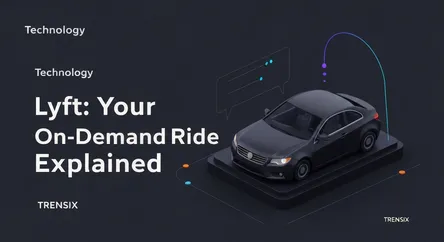Technology
Lyft: Your On-Demand Ride Explained

Explore Lyft, the ride-hailing app connecting millions of riders with drivers. Learn how this service is transforming personal transportation.
What is it?
Lyft is a major transportation network company that operates through a smartphone app, connecting passengers with nearby drivers. As a primary competitor to Uber, it facilitates peer-to-peer ridesharing, handling everything from driver matching and navigation to cashless payments. Users simply open the app, set their destination, and request a ride. Beyond traditional car services, Lyft has expanded its offerings in many urban areas to include shared rides, luxury vehicles, and micromobility options like electric bikes and scooters, positioning itself as a comprehensive urban transportation solution.
Why is it trending?
The rise of Lyft is driven by the growing demand for on-demand services and the shift towards a sharing economy. Consumers increasingly prioritize convenience and access over ownership, making ride-hailing a popular alternative to owning a car or using traditional taxis. The platform is also a key player in the gig economy, providing flexible work opportunities for millions of drivers. Lyft remains in the spotlight due to continuous innovation, including investments in autonomous vehicle technology, its push for sustainability with electric vehicles, and its expansion into new markets and services.
How does it affect people?
Lyft significantly impacts daily mobility. For riders, it offers a convenient and often cost-effective way to travel, reducing the need for personal vehicles and alleviating parking hassles in cities. For drivers, it provides a flexible source of income, although it sparks ongoing debates about labor rights and wages within the gig economy. On a broader scale, Lyft has disrupted the traditional taxi and rental car industries, forcing them to modernize while also prompting cities to re-evaluate transportation regulations and urban planning to accommodate these new services.